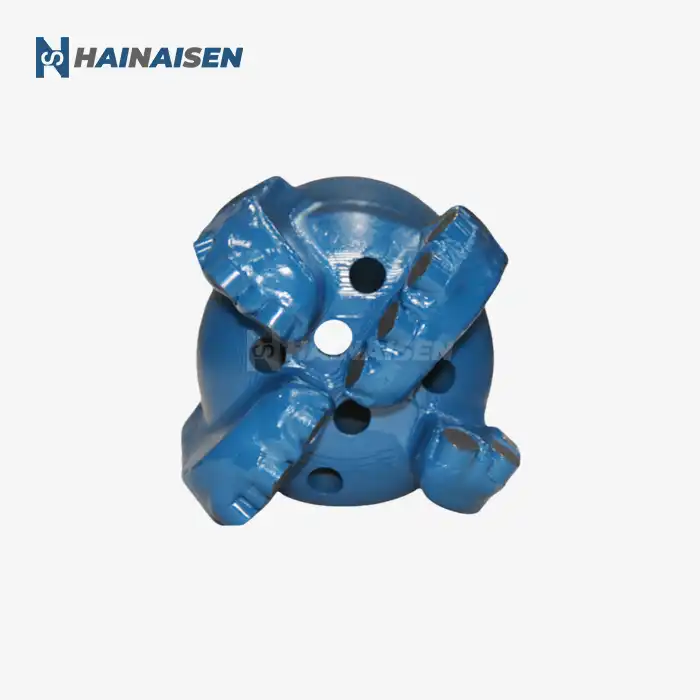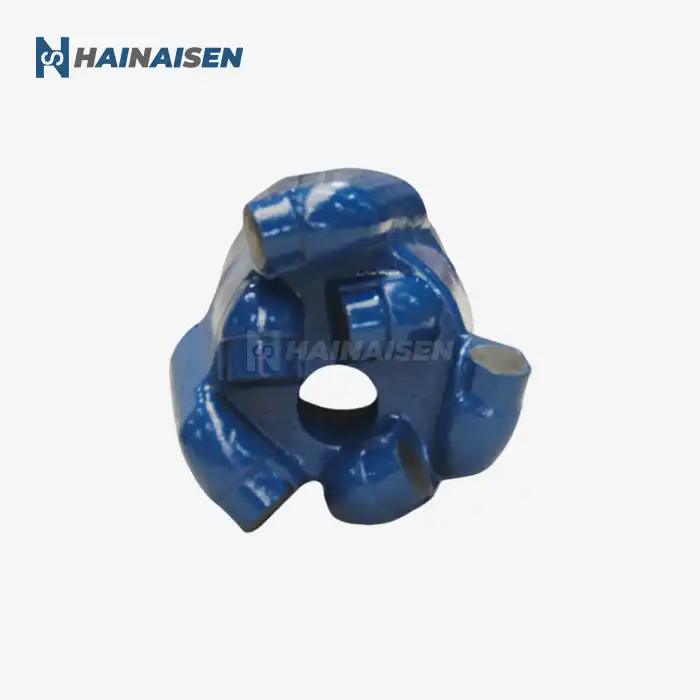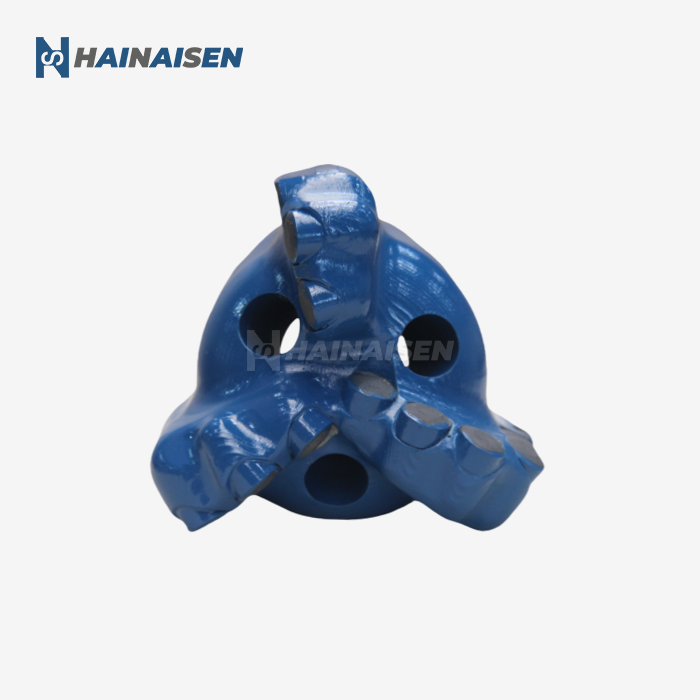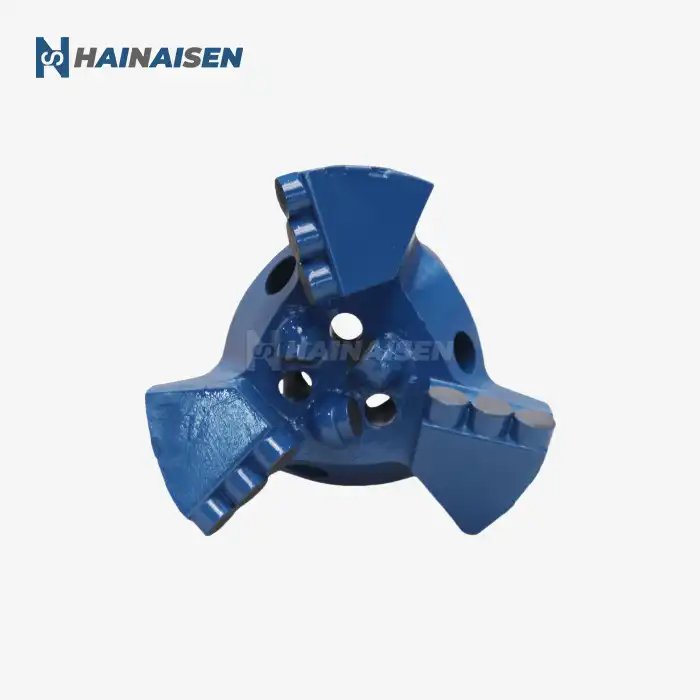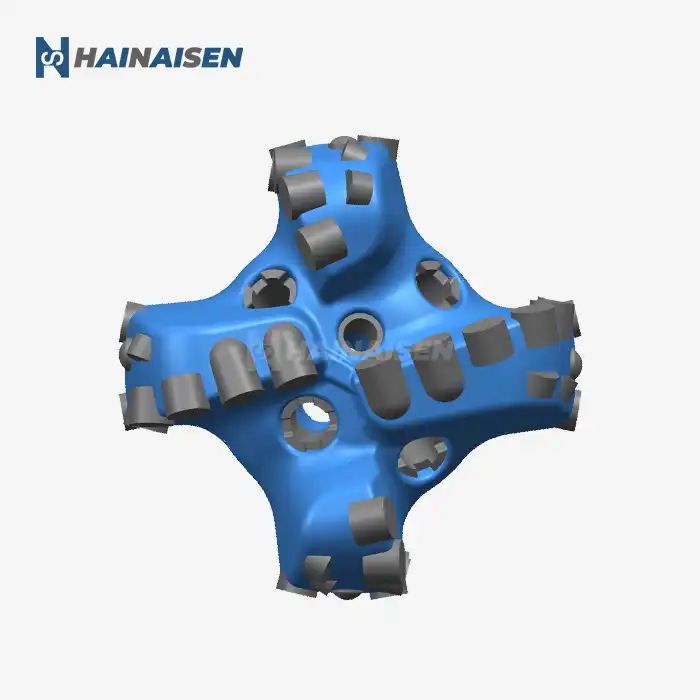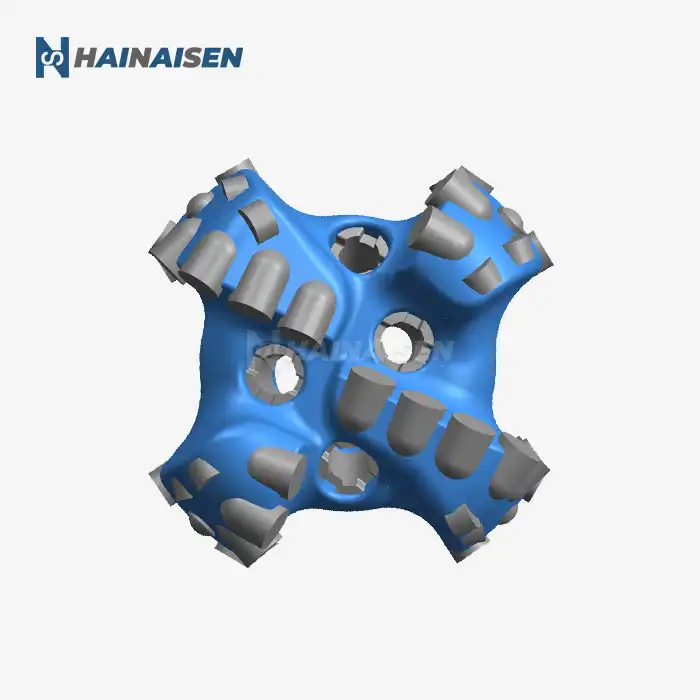Durability Comparison: PDC and Impregnated Bits
When it comes to durability, both Polycrystalline Diamond drill bits and impregnated bits have their unique strengths. PDC bits are renowned for their exceptional longevity and ability to maintain cutting efficiency over extended periods. The secret lies in their construction: PDC bits feature synthetic diamond cutters brazed onto a tungsten carbide matrix body. This design allows for superior wear resistance and thermal stability, enabling the bits to withstand the harsh conditions encountered during drilling operations.
PDC bits excel in maintaining their original diameter and cutting structure, which is crucial for maintaining consistent hole quality throughout the drilling process. Their ability to resist abrasive wear is particularly advantageous in formations with varying hardness levels. Moreover, the thermal stability of PDC cutters allows these bits to perform efficiently at high rotary speeds and under elevated temperatures, which are common in deep drilling scenarios.
Impregnated Bits: Wear Resistance in Extreme Conditions
Impregnated bits, on the other hand, offer a different approach to durability. These bits consist of a matrix body impregnated with diamond particles throughout its structure. As the matrix wears away during drilling, fresh diamond particles are continuously exposed, maintaining the bit's cutting ability. This self-sharpening characteristic makes impregnated bits particularly effective in extremely hard and abrasive formations where PDC bits might struggle.
The wear mechanism of impregnated bits allows them to maintain a relatively consistent rate of penetration over their lifespan, even in challenging geological conditions. However, they generally have a slower penetration rate compared to PDC bits in softer formations. The trade-off is their ability to drill through formations that would quickly wear down or damage PDC cutters.
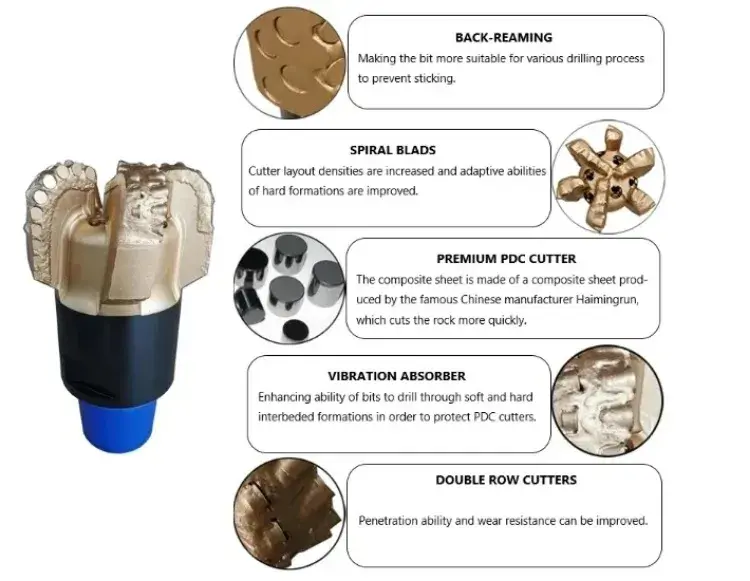
When to Choose PDC Over Impregnated Bits?
Selecting the right drill bit is crucial for optimizing drilling efficiency and reducing overall costs. Polycrystalline Diamond drill bits have become the go-to choice for many drilling applications due to their versatility and high performance. However, there are specific scenarios where PDC bits truly shine over their impregnated counterparts.
Optimal Conditions for PDC Bits
PDC bits are particularly advantageous in the following situations:
- Soft to Medium-Hard Formations: PDC bits excel in a wide range of formations, from soft sedimentary rocks to medium-hard formations. Their cutting action allows for faster penetration rates in these conditions.
- Directional and Horizontal Drilling: The shearing action of PDC cutters makes these bits ideal for directional and horizontal drilling, where precise control over the wellbore trajectory is essential.
- Long Drilling Intervals: Due to their durability and consistent performance, PDC bits are perfect for extended drilling runs, reducing the need for frequent bit changes.
- Formations with Interbedded Hard Streaks: PDC bits can effectively handle formations with varying hardness, maintaining good penetration rates across different layers.
Limitations of PDC Bits
While PDC bits are versatile, they may not be the best choice in extremely hard or highly abrasive formations. In such conditions, the diamond cutters can experience rapid wear or even fracture, leading to premature bit failure. This is where impregnated bits often become the preferred option.
ROI Analysis: PDC vs Impregnated in Various Formations
When evaluating the return on investment (ROI) for drilling operations, the choice between Polycrystalline Diamond drill bits and impregnated bits can have a significant impact on overall project costs and efficiency. To make an informed decision, it's essential to consider factors such as formation characteristics, drilling depth, and operational costs.
Cost Considerations
Initial Cost: PDC bits typically have a higher upfront cost compared to impregnated bits. However, this initial investment can often be offset by their longer lifespan and higher penetration rates in suitable formations.
Operational Costs: The faster penetration rates of PDC bits can lead to reduced rig time, which translates to significant cost savings, especially in deep drilling operations where rig costs are substantial.
Performance in Different Formations
Soft to Medium Formations: In these conditions, PDC bits generally offer a superior ROI due to their faster penetration rates and longer bit life. The ability to drill longer intervals without trips for bit changes can result in substantial time and cost savings.
Hard and Abrasive Formations: Impregnated bits may provide better ROI in extremely hard or abrasive formations where PDC bits would experience rapid wear. Although impregnated bits typically have slower penetration rates, their ability to maintain consistent performance in these challenging conditions can lead to lower overall drilling costs.
Long-Term Value
When considering ROI, it's crucial to look beyond the immediate drilling costs. The quality of the wellbore, the accuracy of the well path in directional drilling, and the overall success of the drilling operation all contribute to the long-term value of the bit choice. PDC bits often excel in these areas, providing smoother wellbores and more accurate directional control, which can lead to improved well performance and reduced completion costs.
In conclusion, the ROI analysis between PDC and impregnated bits is not a one-size-fits-all equation. It requires a careful evaluation of the specific drilling conditions, project requirements, and long-term objectives. While PDC bits often provide superior ROI in a wide range of applications, there are scenarios where impregnated bits can be the more cost-effective choice.
Conclusion
The choice between Polycrystalline Diamond drill bits and impregnated bits is a critical decision that can significantly impact the success and cost-effectiveness of drilling operations. While PDC bits offer superior performance in a wide range of formations and drilling conditions, impregnated bits remain invaluable in extremely hard and abrasive environments. By carefully considering the specific requirements of your drilling project, including formation characteristics, depth, and operational constraints, you can make an informed decision that optimizes both performance and return on investment.
At Shaanxi Hainaisen Petroleum Technology Co., Ltd., we understand the complexities of choosing the right drill bit for your specific needs. Our extensive range of high-quality PDC drill bits, coupled with our expertise in custom bit design, allows us to provide tailored solutions for oil and gas companies, coal mining operations, and various drilling applications. Our commitment to cutting-edge technology and superior durability ensures that our bits deliver exceptional performance and cost-effectiveness across diverse drilling conditions.
Whether you're looking to optimize your drilling operations in soft sedimentary formations or tackle challenging hard rock environments, our team of experts is ready to assist you in selecting the perfect drill bit solution. Don't let bit selection uncertainty hold back your project's efficiency and profitability. Contact us today at hainaisen@hnsdrillbit.com to discuss your specific drilling requirements and discover how our advanced PDC drill bits can revolutionize your drilling performance.
References
1. Smith, J. R., & Johnson, T. L. (2020). Advancements in Polycrystalline Diamond Drill Bit Technology for Oil and Gas Exploration. Journal of Petroleum Engineering, 45(3), 287-302.
2. Chen, X., & Liu, Y. (2019). Comparative Analysis of PDC and Impregnated Bits in Hard Rock Drilling Applications. International Journal of Mining Science and Technology, 29(2), 203-210.
3. Thompson, R. A. (2021). Optimizing Drill Bit Selection: A Comprehensive Guide to PDC and Impregnated Bit Performance. Society of Petroleum Engineers Conference Proceedings, SPE-12345-MS.
4. Rodriguez, M. E., & Garcia, A. S. (2018). Economic Evaluation of Drill Bit Technologies in Various Geological Formations. Journal of Energy Resources Technology, 140(6), 062902.
5. Wang, H., & Zhang, L. (2022). Recent Developments in Polycrystalline Diamond Compact Cutters for Oil and Gas Drilling. Materials Today: Proceedings, 50, 1856-1862.
6. Brown, K. L., & Davis, S. R. (2020). Durability and Wear Mechanisms of PDC and Impregnated Bits in Abrasive Formations. Wear, 450-451, 203213.



